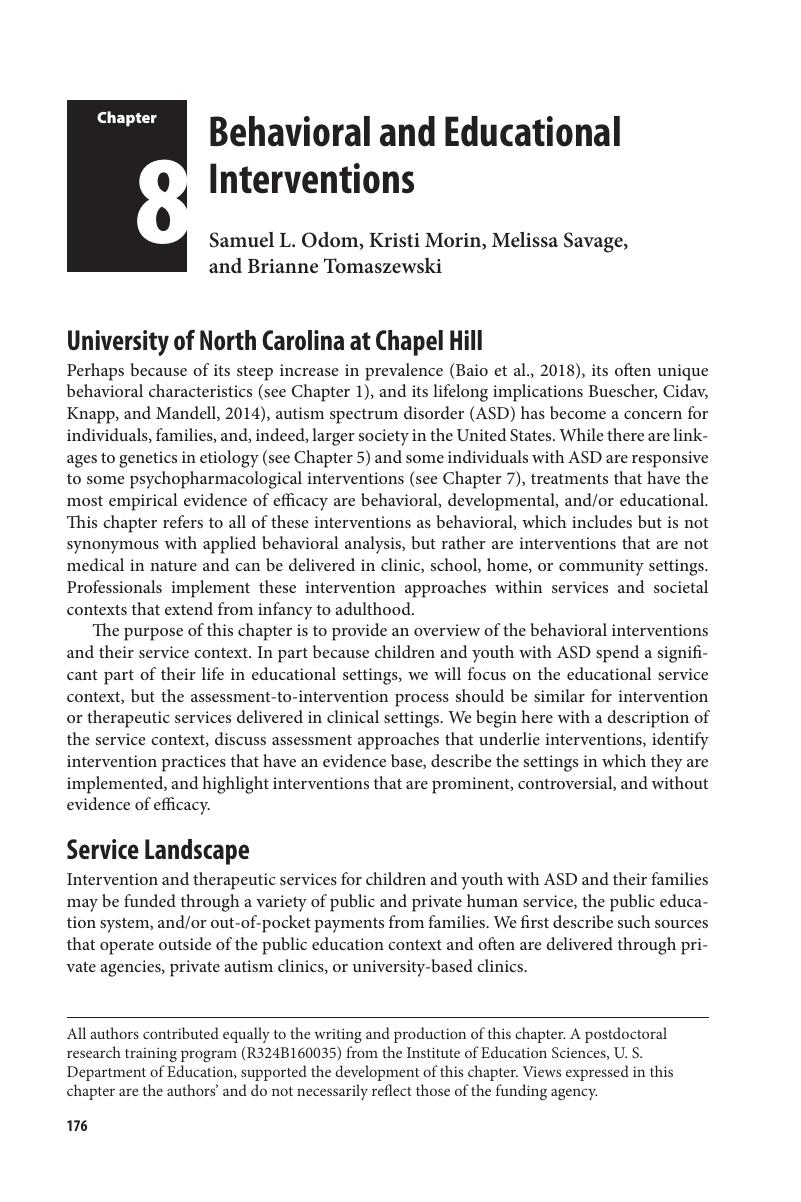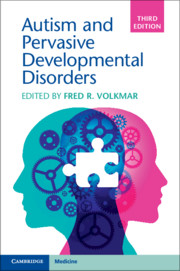Book contents
- Autism and Pervasive Developmental Disorders
- Autism and Pervasive Developmental Disorders
- Copyright page
- Contents
- Contributors
- Preface to 3rd Edition and Acknowledgments
- Chapter 1 Diagnosis and Definition of Autism and Other Pervasive Developmental Disorders
- Chapter 2 Epidemiological Surveys of Autism Spectrum Disorders
- Chapter 3 Psychological Factors in Autism Spectrum Disorders
- Chapter 4 Communication and its Development in Autism Spectrum Disorders
- Chapter 5 The Genetics of Autism Spectrum Disorders
- Chapter 6 The Neurobiology of Autism
- Chapter 7 Psychopharmacology of Autism Spectrum Disorders
- Chapter 8 Behavioral and Educational Interventions
- Chapter 9 The Impact of ASD Research on National Policy Lessons from the Combating Autism Act and the National Institute for Health and Care Excellence
- Chapter 10 Adult Life for People with Autism Spectrum Disorders
- Index
- References
Chapter 8 - Behavioral and Educational Interventions
Published online by Cambridge University Press: 18 January 2019
- Autism and Pervasive Developmental Disorders
- Autism and Pervasive Developmental Disorders
- Copyright page
- Contents
- Contributors
- Preface to 3rd Edition and Acknowledgments
- Chapter 1 Diagnosis and Definition of Autism and Other Pervasive Developmental Disorders
- Chapter 2 Epidemiological Surveys of Autism Spectrum Disorders
- Chapter 3 Psychological Factors in Autism Spectrum Disorders
- Chapter 4 Communication and its Development in Autism Spectrum Disorders
- Chapter 5 The Genetics of Autism Spectrum Disorders
- Chapter 6 The Neurobiology of Autism
- Chapter 7 Psychopharmacology of Autism Spectrum Disorders
- Chapter 8 Behavioral and Educational Interventions
- Chapter 9 The Impact of ASD Research on National Policy Lessons from the Combating Autism Act and the National Institute for Health and Care Excellence
- Chapter 10 Adult Life for People with Autism Spectrum Disorders
- Index
- References
Summary

- Type
- Chapter
- Information
- Autism and Pervasive Developmental Disorders , pp. 176 - 190Publisher: Cambridge University PressPrint publication year: 2019
References
- 5
- Cited by



